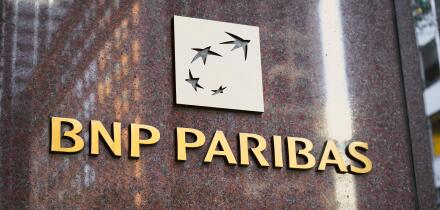
Sovereign, supranational and agency borrowers faced challenging funding conditions in 2015 with the European Central Bank’s quantitative easing programme and bouts of volatility producing a topsy-turvy world of negative yields and a reversal in emerging markets. The MTN segment was no different — even if the result was what looked like a remarkably stable market overall, there were some big changes taking place.
Many eurozone government bond yields were dragged into negative territory by the continent’s economic torpor and the ECB’s QE programme, with Germany, Netherlands, Austria, Belgium and France in the red even at five year tenors or longer.
And while the ECB deposit rate in early December was largely priced in, with Mario Draghi pointing to a virtually open-ended extension to QE, the market is bracing to see a wider range of government bonds slip into the sub-zero yield space this year.
It has meant that MTN investors in SSA paper have had to adjust to the new reality of low and sometimes negative yields.
While no investor is going to be thrilled about the prospect of paying, at least in nominal terms, to park their money, the picture for demand during this year is not entirely bleak. If last year is any guide, the MTN market should be able to cope, say bankers.
Overall issuance levels in 2015 largely shrugged off the volatility. The second and third quarters saw $9.2bn and $8.6bn of SSA MTN issuance, roughly in line with the corresponding quarters in 2014 when $8.9bn and $9.1bn were issued. And by the end of the year, volumes were even higher than in 2014, with the last quarter registering $6.9bn by the beginning of December, compared to just $5.0bn in the whole of the last quarter of 2014.
“People paused for thought to adjust to the fact that there was essentially a new buyer picking up two billion a day,” says one MTN banker in London of the QE programme. “But there is only so long people can put off deploying and raising cash. They have had to adjust to a new norm and, by the end of the third quarter, the market had stabilised in a new range.”
This resilience is primarily due to the quality of issuer, says the banker. “There is a significant captive market,” he explains. “Banks maintaining liquidity buffers have limited ability to look elsewhere. Central banks have a remit to protect their deposits and won’t compromise much on the quality of their investments, some may look to the higher yielding end of the spectrum but they’re unlikely to leave the asset class entirely.”
But not every investor is willing or able to take on negative yielding assets: “There has already been some pushback from real money investors who are more dependent on yield,” he adds. “Certain investors, insurance companies for instance, are likely to have to reduce exposure to SSAs.” And even though yield-dependent investors will likely start looking elsewhere, bankers are not expecting a sharp drop-off in demand.
“As QE continues, more investors will have to look elsewhere but these issues progress at a glacial pace,” says the banker. “Many investors will be holding 20 year bonds with 10 years left and very good yields compared to what they’re getting now. Picking up a few short end bonds with small or even negative yields is not going to be a huge problem for them.”
Overall, says Amaury Gossé, global head of MTNs at Citi in London, SSAs were not too badly affected last year. “SSA issuance has been relatively stable,” he notes. “Most issuers had stable funding needs in 2015.”
The exception is the floating rate corner of the market, which Gossé says has seen fewer deals because coupons would be likely to go negative. That might be the case, but Dealogic data shows that even FRNs have been quite stable. In the euro market, for instance, €28.2bn had been issued in floating rate format by the end of November 2015 out of a total of €64.13bn.
Turmoil in EM
SSA MTNs have long been a popular tool for investors that want exposure to emerging market currency risk without taking too much credit risk — while, occasionally, at the same time, meeting some of the more esoteric funding needs of issuers.
QE in Europe, by reducing nominal yields, has made EM FX trades look, on some basic levels, even more attractive. Three month rates in Brazilian real have been over 13%, in Turkish lira more than 10%, and in South African rand nearly 7% (and rising).
Where there has been demand, it has been concentrated at the short end of the curve, where European yields are negative and where risk from political or economic developments is lowest. Issuers have been taking advantage, says another MTN banker in London.
“The yield pick-up for emerging market currencies is so significant that investors are happy to leave a few basis points on the table,” the banker says. “The issuer gets a good cost of funds and there is potential for some arbitrage.”
But currency weakness was an ever-present concern in the final months of 2015 — contributing to a fall in issuance. EM FX trades — in one of eight of the most popular currencies — added up to just $10bn in 2015. This was down from $14.4bn in 2014, according to Dealogic data.
“Things have been tough on the EM currency front,” says Gossé. “Investors have been a lot less active as things have been so volatile. This has made life a lot harder for secondary traders and the overall secondary market is a lot less liquid.”
The Brazilian real, for instance, tumbled 31% against the dollar in 2015, while the Turkish lira fell down 21% and the South African rand plummeted by 26% (and counting).
The certainty of the Fed increasing rates during 2016 has been making emerging market currency assets even less attractive to hold. However, some buyers of these assets are unlikely to take much notice of any change. Emerging markets money management funds will continue to buy SSA bonds, as one of the least risky assets they are able to access in times of volatility, say bankers.
A faltering Chinese economy has been blamed for much of the EM weakness as commodity producers have suffered disproportionately. EM volumes will continue to struggle this year until there is a clearer picture of China’s growth trajectory, says another MTN trader in London.

Home from home
While yields for euro denominated bonds are low and instability prevails in emerging markets, other investors have sought out sterling and US dollar denominated bonds.
MTN bankers in London point out that short end trades in dollars proved very popular in the latter stages of 2015. Dealogic data backs up the anecdotal evidence. From a total $2.6bn of sub-three year SSA issuance in dollars in 2014, the market grew to $7.5bn in 2015. The basis swap favoured funding in dollars and swapping to euros — it moved from around the minus 20bp level at the start of 2015 to trade in a minus 30bp to minus 40bp range early in the first quarter — leading to a flurry of short dated paper.
And in the structured note market, uncertainty can be a benefit. The additional volatility created by potential Fed rate hikes, for instance, meant investors in simple structures, such as capped and floored floating rate notes, could capture more of a premium, say MTN bankers.
Sterling also saw a lot more action in late 2015 than in previous years (see graph). Bankers say that an August move in the sterling/euro basis allowed euro-based issuers to offer higher yields in sterling while still coming away with a competitive cost of funds.
An additional source of demand for sterling was from UK banks last year. With regulatory changes requiring banks to hold more high quality assets in their own currency on the way, UK banks are crying out for SSA issues in sterling with tenors shorter than those offered by the UK Treasury.
NIPs nix MTNs
Private placement issuance volumes were dragged lower in the post-summer period by events in the public syndicated bond market, where bouts of volatility raised new issue premiums. That changed the calculus for buyers, says Gossé. “It made MTN trades less attractive for investors,” he says.
Meanwhile, issuers mostly wanted to fund in the three to 10 year maturities, as they had comfortable short term cash positions and were reluctant to issue expensive longer dated trades. “In euros and US dollars, this maturity bucket is usually public benchmark territory and few private placements are executed as they are less generous in terms of pricing and offer less liquidity than benchmark trades,” says Gossé.
The introduction of tougher liquidity rules for banks, though, might help change this year’s outlook. Bank treasuries will increasingly be looking to buy and hold high quality assets like SSA issues — so liquidity will not be such a concern. And if new issue premiums also start to tighten, MTNs might once again look more attractive to buyers than tightly-priced public benchmark deals.






